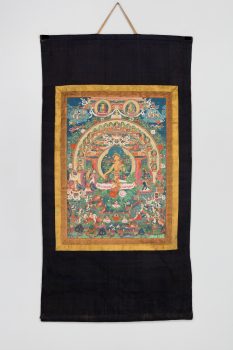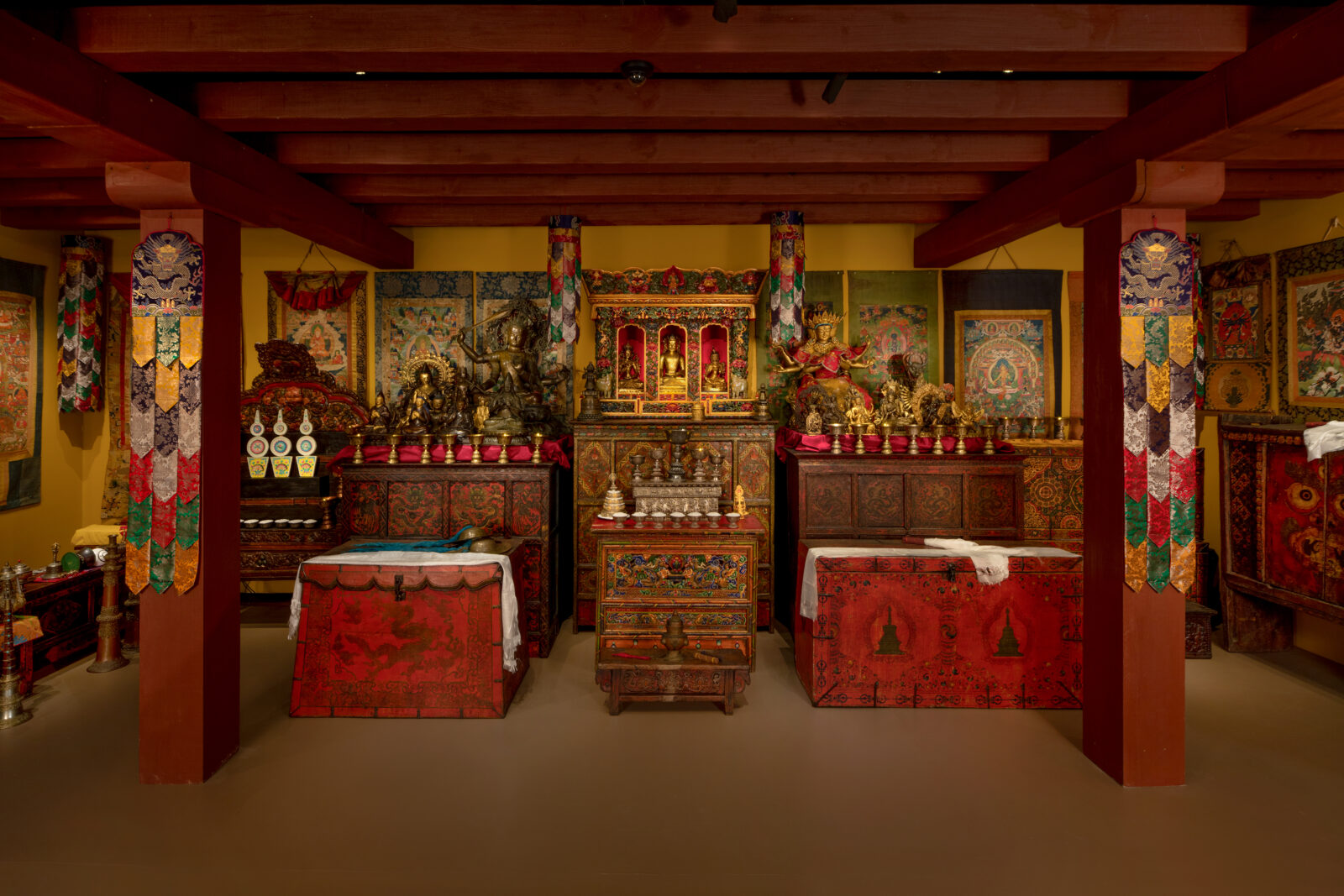Tibet
19th century
The right hand is extended in a giving gesture.
Tibet
19th century



Female deity Tara is popular in all Tibetan Buddhist traditions. This painting depicts the realm of Tara where she is seated in her palace and surrounded by her twenty one emanations arrayed around her. The famous Praises to Tara address each Tara by her name, emphasizing their individual qualities and requesting blessings. The figures on lotuses directly below the central figure are devotees who aspire to be reborn in her realm. Any practitioner would easily identify with these figures, while reciting the praises to the goddesses.

Photo by Dave de Armas
A virtuous feeling and deep respect toward an authentic teaching, teacher, or path. Buddhists believe that expansive study, analysis, and meditation are essential steps for cultivating a healthy and enduring devotion.
Buddhist practitioners in some traditions believe that cutting through ordinary perceptions that keep us in the endless cycle of death and rebirth, known as samsara, can create a powerful and enhanced divine identity that leads to enlightenment.
A meditation technique primarily used in tantric practice that involves imagining a deity in one’s mind or imagining oneself becoming a deity and carrying out various activities. Such techniques are intended to help a practitioner transform ordinary perception and achieve enlightened qualities.
Female bodhisattvas and tantric deities embody specific enlightened qualities such as wisdom, power, and protection, and can be peaceful or wrathful in appearance.
Today, Tibetans primarily inhabit the Tibetan Plateau, situated between the Himalayan mountain range and the Indian subcontinent to the west, Chinese cultural regions to the east, and Mongolian cultural regions to the northeast. During the 7th to 9th century, Tibetan rulers expanded their empire across Central Asia, and established Buddhism as the state religion.
Get the latest news and stories from the Rubin, plus occasional information on how to support our work.